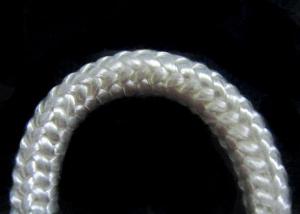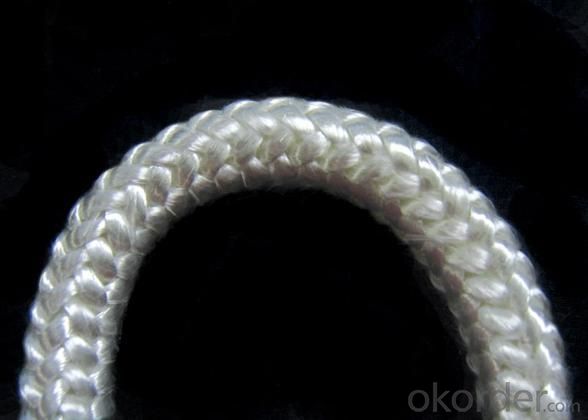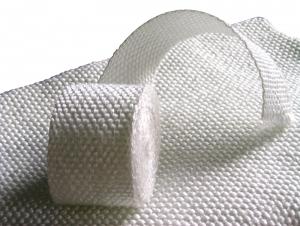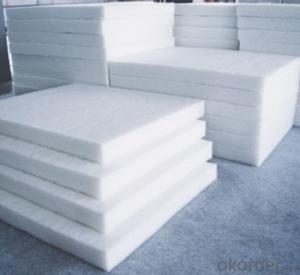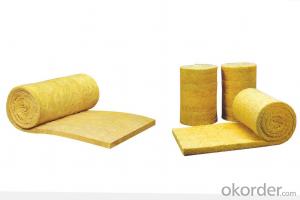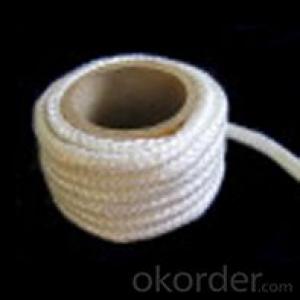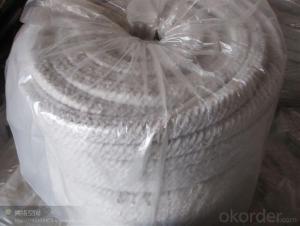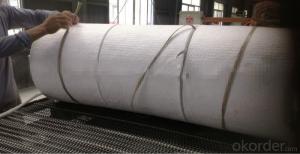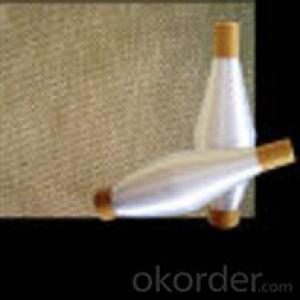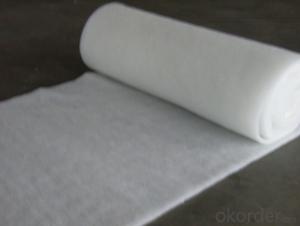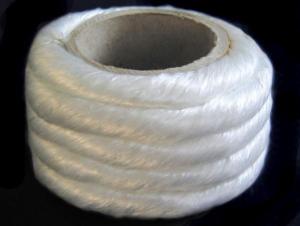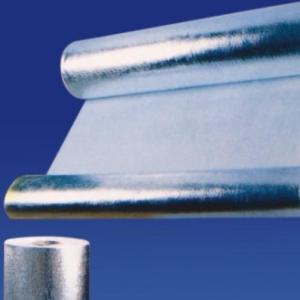Glass Fiber Textile Textured Fiberglass Rope
- Loading Port:
- China Main Port
- Payment Terms:
- TT or L/C
- Min Order Qty:
- 10 Tons kg
- Supply Capability:
- 2*20FCL Per Month kg/month
OKorder Service Pledge
OKorder Financial Service
You Might Also Like
Brief Description
Fiberglass Texturized Rope This rope has two kinds of structure.
One is braided rope which consists of parallel texturized threads, strips or ropes, with texturized yarn braided around them.
Another is twisted rope which is made bya certain number
Product Attributes
Type:Other Heat Insulation Materials
Place of Origin:China (Mainland)
Detailed introduction to Fiberglass Textured Rope:
Fiberglass Texturized Rope
This rope has two kinds of structure. One
is braided rope which consists of parallel
texturized threads, strips or ropes, with
texturized yarn braided around them.
Another is twisted rope which is made by
a certain number strands of texturized
yarn twisted tightly together to form a
rope with high tensile strength.

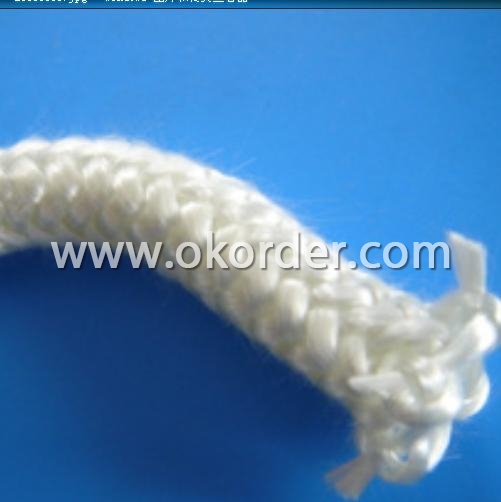
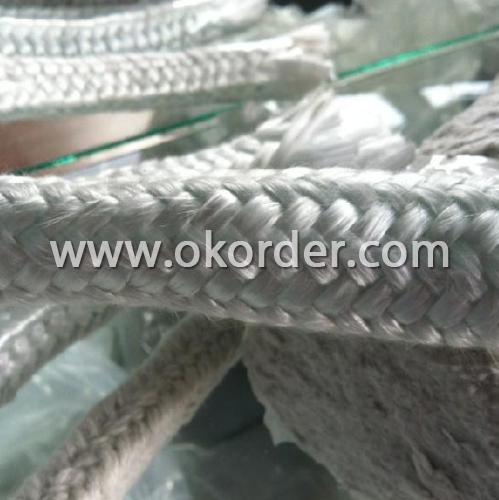
- Q: Are glass fiber textiles resistant to staining or discoloration?
- Yes, glass fiber textiles are generally resistant to staining or discoloration. The glass fiber material is non-porous and does not absorb liquids or other substances, making it difficult for stains to penetrate the fabric. Additionally, glass fiber textiles are often treated with chemical finishes that enhance their stain resistance properties. These finishes create a protective barrier that helps repel liquids and prevent stains from setting in. As a result, glass fiber textiles are less likely to become discolored or stained compared to other types of fabrics.
- Q: How does glass fiber textile perform in terms of sound absorption?
- Glass fiber textiles are known for their excellent sound absorption properties. The porous and fibrous nature of the material allows it to effectively absorb and dampen sound waves, reducing echo and reverberation in a given space. This makes glass fiber textiles a popular choice for soundproofing applications in various settings, such as recording studios, theaters, and conference rooms.
- Q: Can glass fiber textile be used in tents for extreme weather conditions?
- Yes, glass fiber textile can be used in tents for extreme weather conditions. Glass fiber is a strong and durable material that is resistant to harsh weather elements such as wind, rain, and snow. It provides excellent insulation and is capable of withstanding extreme temperatures. Additionally, glass fiber is lightweight and flexible, making it a suitable choice for tent construction in challenging weather conditions.
- Q: What are the limitations of glass fiber textiles?
- Glass fiber textiles have several limitations. Firstly, they are brittle and can break easily under high impact or stress, making them less suitable for applications that require flexibility or durability. Additionally, glass fiber textiles have poor resistance to high temperatures, which can cause them to weaken or lose their structural integrity. They are also prone to abrasion and can be easily damaged by sharp objects or rough handling. Lastly, glass fiber textiles can be less comfortable to wear or use due to their stiffness and lack of breathability.
- Q: What are the advantages of using glass fiber textiles?
- There are several advantages of using glass fiber textiles in various applications. Firstly, glass fiber textiles offer exceptional strength and durability. They have a high tensile strength, meaning they can withstand significant tension without breaking or tearing. This makes them ideal for applications where a strong and long-lasting material is required, such as in the construction industry for reinforcing concrete structures. Secondly, glass fiber textiles are highly resistant to heat and fire. They have a low thermal conductivity, meaning they do not conduct heat easily. This makes them suitable for applications where high temperatures are involved, such as in insulation materials for fire-resistant clothing or in the aerospace industry for thermal protection systems. Additionally, glass fiber textiles are lightweight and flexible. They can be easily woven into various shapes and sizes, allowing for versatility in their application. This makes them favorable for use in industries such as automotive, aerospace, and sports equipment manufacturing, where weight reduction and design flexibility are crucial. Moreover, glass fiber textiles have excellent chemical resistance. They are highly resistant to corrosion from most chemicals, making them suitable for use in corrosive environments, such as in chemical processing plants or wastewater treatment facilities. Furthermore, glass fiber textiles have good electrical insulation properties. They have a low electrical conductivity, making them ideal for applications where electrical insulation is required, such as in the manufacturing of electrical cables or circuit boards. Lastly, glass fiber textiles are environmentally friendly. They are made from natural materials, such as sand, and can be recycled, reducing their impact on the environment. They also have a long lifespan, resulting in reduced waste and the need for frequent replacements. In summary, the advantages of using glass fiber textiles include their exceptional strength and durability, resistance to heat and fire, lightweight and flexible nature, chemical resistance, good electrical insulation properties, and environmental friendliness. These properties make them a preferred choice in a wide range of industries and applications.
- Q: Can glass fiber textiles be used in interior design?
- Yes, glass fiber textiles can be used in interior design. Glass fiber textiles, also known as fiberglass, have a wide range of applications in the field of interior design. They can be used for wall coverings, curtains, upholstery, and even furniture. Glass fiber textiles offer several advantages that make them suitable for interior design. Firstly, they are highly durable and resistant to wear and tear, making them ideal for high-traffic areas such as hotels, restaurants, and offices. Additionally, they are fire-resistant, which is crucial for safety in public spaces. Glass fiber textiles also offer a variety of aesthetic options. They can be manufactured in different colors, patterns, and textures, allowing designers to create unique and visually appealing interiors. Moreover, they can be easily molded and shaped, providing flexibility in design and enabling the creation of customized pieces. In terms of functionality, glass fiber textiles have soundproofing properties, which can help control noise levels in interior spaces. They also have thermal insulation properties, contributing to energy efficiency and creating a comfortable environment. Furthermore, glass fiber textiles are easy to clean and maintain. They are resistant to stains, moisture, and mildew, making them suitable for areas prone to spills or humidity, such as kitchens and bathrooms. Overall, glass fiber textiles provide a versatile and practical solution for interior design. Their durability, fire resistance, aesthetic options, functionality, and ease of maintenance make them a popular choice among designers looking for innovative and sustainable materials for their projects.
- Q: What are the disadvantages of using glass fiber textiles?
- Glass fiber textiles come with a range of drawbacks. Firstly, their cost is generally higher compared to other textile materials due to the complex production process and specialized equipment required. This can be problematic for those on limited budgets. Secondly, glass fiber textiles are prone to breakage and brittleness. Despite being known for their strength and durability, they can easily sustain damage from external forces or impacts. This restricts their use in applications where flexibility or resistance to bending is crucial. Another disadvantage relates to the potential health risks associated with glass fibers. During manufacturing, tiny glass particles can become airborne and inhaled, posing a threat to workers' respiratory systems. Prolonged exposure to these fibers can result in lung diseases such as fibrosis or even lung cancer. Therefore, it is essential to take proper safety precautions, such as wearing protective masks, when working with glass fiber textiles. Furthermore, glass fiber textiles have poor resistance to high temperatures. They tend to lose their structural integrity and strength when exposed to extreme heat. This hinders their usability in industries like aerospace or automotive, where heat resistance is critical. Lastly, glass fiber textiles exhibit relatively low resistance to UV radiation. Prolonged exposure to sunlight can cause the fibers to degrade, leading to discoloration and weakened strength. This presents a significant drawback in applications where the textiles are exposed to outdoor conditions or direct sunlight. In conclusion, despite their strengths and durability, glass fiber textiles have several disadvantages to consider, including high cost, brittleness, potential health risks, poor heat resistance, and low resistance to UV radiation. These factors should be taken into account when deciding whether to utilize glass fiber textiles in different applications.
- Q: Is glass fiber textile resistant to chemicals?
- Yes, glass fiber textile is generally resistant to chemicals. Glass fiber is known for its excellent chemical resistance, making it suitable for various applications where exposure to chemicals is common. It is highly resistant to acids, alkalis, solvents, and other corrosive substances. This resistance is due to the inherent properties of glass, such as its inertness and non-reactivity. Additionally, glass fiber textile materials can be further enhanced with specialized coatings or treatments to provide even greater chemical resistance. However, it is important to note that the specific level of chemical resistance may vary depending on the type and composition of the glass fiber textile, as well as the specific chemicals involved. Therefore, it is always recommended to consult the manufacturer's specifications or conduct appropriate testing to ensure suitability for a particular chemical environment.
- Q: Are glass fiber textiles resistant to static cling?
- Glass fiber textiles are known for their resistance to static cling. This is due to the distinctive characteristics of glass fiber materials, including their low conductivity and high tensile strength. As a result, they are less prone to accumulating static electricity. Moreover, glass fibers do not readily generate static charges when rubbed against different surfaces, thus decreasing the chances of static cling. This quality of resisting static cling contributes to the widespread usage of glass fiber textiles in diverse applications, ranging from clothing and upholstery to industrial fabrics.
- Q: Can glass fiber textile be used in radiation shielding?
- Yes, glass fiber textile can be used in radiation shielding. It has excellent radiation attenuation properties and is commonly used in various applications where protection from radiation is essential, such as nuclear power plants, medical facilities, and research laboratories.
Send your message to us
Glass Fiber Textile Textured Fiberglass Rope
- Loading Port:
- China Main Port
- Payment Terms:
- TT or L/C
- Min Order Qty:
- 10 Tons kg
- Supply Capability:
- 2*20FCL Per Month kg/month
OKorder Service Pledge
OKorder Financial Service
Similar products
Hot products
Hot Searches
Related keywords
